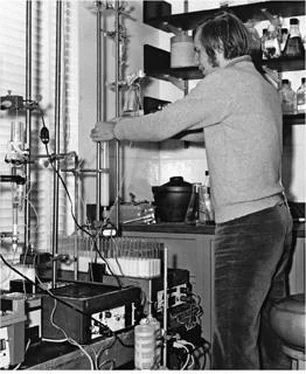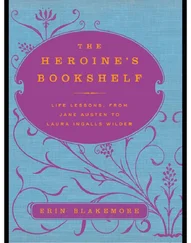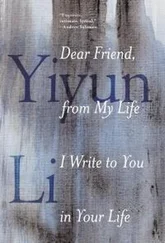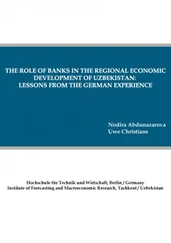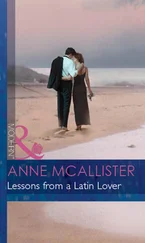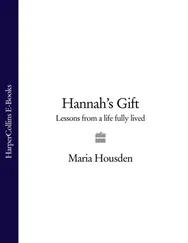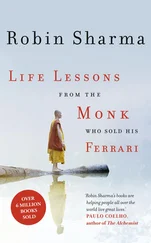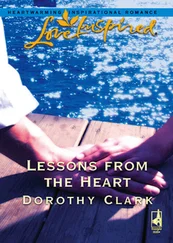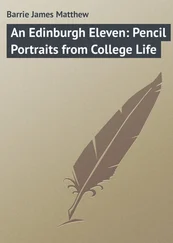James Watson - AVOID BORING PEOPLE - Lessons from a Life in Science
Здесь есть возможность читать онлайн «James Watson - AVOID BORING PEOPLE - Lessons from a Life in Science» весь текст электронной книги совершенно бесплатно (целиком полную версию без сокращений). В некоторых случаях можно слушать аудио, скачать через торрент в формате fb2 и присутствует краткое содержание. Жанр: Биографии и Мемуары. Описание произведения, (предисловие) а так же отзывы посетителей доступны на портале библиотеки ЛибКат.
- Название:AVOID BORING PEOPLE: Lessons from a Life in Science
- Автор:
- Жанр:
- Год:неизвестен
- ISBN:нет данных
- Рейтинг книги:5 / 5. Голосов: 1
-
Избранное:Добавить в избранное
- Отзывы:
-
Ваша оценка:
- 100
- 1
- 2
- 3
- 4
- 5
AVOID BORING PEOPLE: Lessons from a Life in Science: краткое содержание, описание и аннотация
Предлагаем к чтению аннотацию, описание, краткое содержание или предисловие (зависит от того, что написал сам автор книги «AVOID BORING PEOPLE: Lessons from a Life in Science»). Если вы не нашли необходимую информацию о книге — напишите в комментариях, мы постараемся отыскать её.
AVOID BORING PEOPLE: Lessons from a Life in Science — читать онлайн бесплатно полную книгу (весь текст) целиком
Ниже представлен текст книги, разбитый по страницам. Система сохранения места последней прочитанной страницы, позволяет с удобством читать онлайн бесплатно книгу «AVOID BORING PEOPLE: Lessons from a Life in Science», без необходимости каждый раз заново искать на чём Вы остановились. Поставьте закладку, и сможете в любой момент перейти на страницу, на которой закончили чтение.
Интервал:
Закладка:
Early the following morning, I left Liz to fly to Sarasota to collect a now very apprehensive Dad and bring him by plane to my sister's home in Washington. In 1964, after resigning from the CIA, her husband, Bob Myers, founded The Washingtonian magazine with his University of Chicago roommate Laughlin Phillips. Bob was its first publisher and Laughlin the editor. Just recently, Bob had become publisher of the New Republic, but too late for Dad, long a faithful reader, to take anything but a brief pleasure from seeing his son-in-law help run his favorite magazine of liberal politics.
Upon my return to Cambridge, I found myself all too soon scheduled to leave Liz again for the annual American Cancer Society (ACS) get-together of scientists and science journalists, this time being held in La Jolla, to the north of San Diego. Out of this meeting, it was hoped, would emerge optimistic press coverage to kick-start the ACS annual fund drive. Several months before, I'd eagerly accepted the invitation to attend, believing the meeting would help me focus on how to start up tumor virus research at Cold Spring Harbor. As it was to be held just before Harvard's weeklong spring break, there was also the possibility of Liz's joining me there after the conference.
To appear as a couple on a trip without causing a scandal, however,
it would be necessary for us to marry immediately after Liz's arrival in California. Happily, she had no qualms, instantly accepting my proposal that we effectively elope. We decided not to let anyone know except for her parents in Providence. In the end, the only other person at Harvard in on our plan was my secretary. She found out when Liz came in saying this would be her last day of work. Susie said that Dr. Watson would be much disappointed. Liz replied that, in fact, he wouldn't be disappointed at all.Before flying west I called Sylvia Bailey, the English-born secretary of Jacob Bronowski, the English polymath hired by the Salk Institute upon Leo Szilard's death, for advice about how Liz and I could best get wed in California. To my surprise, she called back the next day, saying that it would be faster to arrange a church ceremony than a civil ceremony before a justice of the peace. If I gave her the go-ahead, she would contact her friend the Reverend Forshaw, whose Mission-style church was in the center of La Jolla. In turn, Liz went with her mother back to Bonwit Teller's, this time no longer just looking but ready to bring home several outfits appropriate to the occasion and the many photographs we would take to send to relatives and friends by way of announcement.
At the ACS science writers’ gathering, I spoke at length to Bob Rein-hold, a former Crimson editor, now writing about science for the New York Times. In the article he soon wrote about my plans to turn Cold Spring Harbor toward cancer research, he remarked on the nervous way I held my can of Coke, having no way of knowing that this was no garden-variety tic but the anxious anticipation of my wedding the next evening. My nervousness disappeared as soon as Liz came off the plane. Her smile would always make me feel good. Shortly, we drove north of La Jolla to get a marriage license that would permit us at 9:00 P.M. on March 28 to be wed in the La Jolla Congregational Church. That I was not a churchgoer was of no concern to Reverend Forshaw, whose library prominently displayed one of Bertrand Russell's thicker tomes.
Upon our return to the La Valencia Hotel, we had an early supper at its Whaler's Bar before going on to Jacob and Rita Bronowski's one-story glass house in La Jolla Farms near the Salk Institute. Its stylish
ambience was much better suited to wedding photos after sunset than was the church. Afterward, Liz met my small circle of La Jolla friends, who came to the La Valencia for a surprise party without knowing its purpose. We spent our first night as a married couple in one of the rooms looking out on the Pacific Ocean.
Liz and I on our wedding day, March 28,1968, in La Jolla, California
The next morning we telephoned my sister to tell her and Dad the news and to let them know that we would stop off in Washington on our way back to Harvard. I went to find postcards to let friends such as Seymour Benzer and Paul Doty know that “a nineteen-year-old was now mine.” After a leisurely lunch, we drove east to see the desert plants blooming around Borrego Springs. We spent the night at Casa del Zora before driving through the Anza Desert to the Imperial Valley and from there to the village of San Felipe, some seventy miles south of the Mexican border. There we spent two nights in a hotel catering to fishermen,
taking care not to get sunburned while spending much of Sunday swimming in the already warm waters of the Gulf of California.Unknown to us was Lyndon Johnson's sudden decision to make a major address to the nation that evening. Only after we were back on the U.S. side of the border, driving across southern Arizona, did we learn that the night before, Johnson had announced he would not seek reelection. We hoped he would get us out of the quagmire in Southeast Asia before his term ended, but it seemed a vain hope. Though Johnson then presented the Tet offensive as a big setback for the Viet Cong, he had to believe otherwise, else he would not be stepping down.
By nightfall we were outside Tucson. The next day we admired thousands of tall cacti on an early morning walk in the Saguaro National Park. Dropping off our rented Ford Mustang at the airport, we caught the plane for Washington. Spring was in full bloom, allowing everyone at Betty's house, next to Glover Archibald Park, to half ignore Dad's awful prognosis as Liz and I shared the details of our wedding and the days afterward. Unexpectedly on hand was a photographer sent by McGraw-Hill's new magazine Scientific Research. Its forte was fast-breaking stories about scientists as well as science itself. Word that I had just married was already about, and they wanted a picture of Liz and me. The resulting photos revealed Liz a photographer's dream, and we were to be seen together on the cover of the April 29 issue.
The next morning we drove north for four hours to Cold Spring Harbor to see our eventual home. From Washington, I had let John Cairns know of our impending day trip, and the Lab arranged a special welcome dinner prepared by Francoise Spahr. Her husband, Pierre-Francois, was over from Geneva for six months to work with my former Harvard student Ray Gesteland, whom John Cairns had recruited to the lab staff a year earlier. But by the time we gathered in the main room of the big Victorian house at the Lab's entryway, the news of our marriage was eclipsed by horrid events elsewhere. In Memphis, an unknown assassin had just killed Martin Luther King Jr. Before driving off to Providence the next afternoon, Liz and I were interviewed separately by a reporter from Long Island's leading
newspaper, Newsday. To her dismay, he wound up suggesting in the article about us that her Radcliffe education would effectively lead her to a life of darning my socks.
Liz and I graced the cover of Scientific Research on April 29,1968.
At Liz's home, I met her father, a physician, whom I discovered to be, like my father, a keen reader and skeptic. In this important way, Liz and I had similar upbringings. Though her parents sent her to Central Baptist Church, its chief attraction to them was the music—Providence's best. That evening, my eyes kept drifting to the TV set and its images of the widespread race riots in the wake of the King assassination. The assailant was still unknown.
Читать дальшеИнтервал:
Закладка:
Похожие книги на «AVOID BORING PEOPLE: Lessons from a Life in Science»
Представляем Вашему вниманию похожие книги на «AVOID BORING PEOPLE: Lessons from a Life in Science» списком для выбора. Мы отобрали схожую по названию и смыслу литературу в надежде предоставить читателям больше вариантов отыскать новые, интересные, ещё непрочитанные произведения.
Обсуждение, отзывы о книге «AVOID BORING PEOPLE: Lessons from a Life in Science» и просто собственные мнения читателей. Оставьте ваши комментарии, напишите, что Вы думаете о произведении, его смысле или главных героях. Укажите что конкретно понравилось, а что нет, и почему Вы так считаете.
